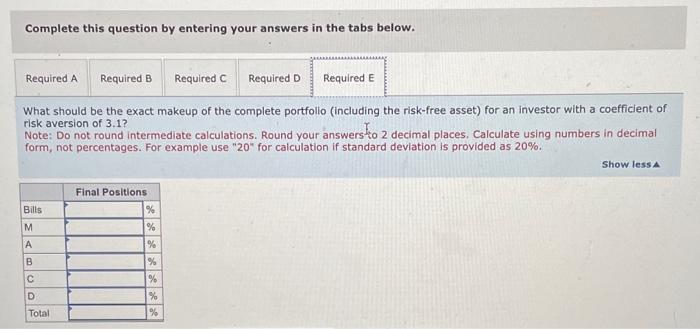Answered step by step
Verified Expert Solution
Question
1 Approved Answer
A portfolio manager summarizes the input from the macro and micro forecasters in the following table: Asset Stock A Stock B Stock C Stock D
A portfolio manager summarizes the input from the macro and micro forecasters in the following table: Asset Stock A Stock B Stock C Stock D Micro Forecasts Expected Return (%) 27 24 23 18 Beta 1.6 1.9 1.0 1.0 Residual Standard Asset T-bills Passive equity portfolio Deviation (8) 62 Macro Forecasts 73 62 57 Expected Return (8) 14 22 Standard Deviation 0 24 Required: a. Calculate expected excess returns, alpha values, and residual variances for these stocks. b. Compute the proportion in the active portfolio and the passive index. c. What is the Sharpe ratio for the optimal portfolio? d. By how much did the position in the active portfolio improve the Sharpe ratio compared to a purely passive index strategy? e. What should be the exact makeup of the complete portfolio (including the risk-free asset) for an investor with a coefficient of risk aversion of 3.1?






Step by Step Solution
There are 3 Steps involved in it
Step: 1

Get Instant Access to Expert-Tailored Solutions
See step-by-step solutions with expert insights and AI powered tools for academic success
Step: 2

Step: 3

Ace Your Homework with AI
Get the answers you need in no time with our AI-driven, step-by-step assistance
Get Started


